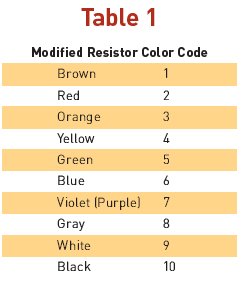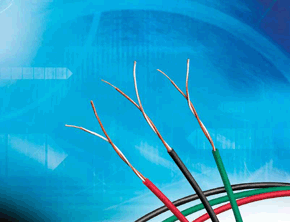Finding the Right Audio Consoles and Cables Designed for Meetings and Staged Events
Audio consoles come in many different designs — for radio and television broadcasting, film and recording studios, public address systems, concert halls, sports stadiums, and multipurpose auditoriums and meeting rooms. Audio consoles typically used in the rental and touring market for large and small events should be used with specific cabling to ensure signal strength, sound quality, and clarity.
Belden Brilliance AES/EBU Digital Audio cable is a robust single-pair Category 5e indoor/outdoor cable that offers low capacitance and optimal digital/analog performance. The cable features compact size and lightweight, yet it is rugged enough to withstand frequent handling and harsh environmental conditions.
There is no argument that consoles and mixers for the rental and touring market present a unique number of requirements, not the least of which is superior ruggedness. But they also require a number of other options such as high audio quality, low noise, and EMI and RFI electrical noise immunity. Also these consoles and mixers should be designed for shipping, often as a “fly-pack,” and easily set up night after night.
Consoles can range from just two or three inputs — in which case they are called mixers — up to huge milliondollar consoles with hundreds of inputs. Consoles can be analog or configured for digital audio, and there are even units that control the audio as an Ethernet data stream. This wide range of signal types and applications demands an equally wide selection of cables available to collect, deliver, and distribute audio signals.
- Balanced vs. Unbalanced
- Lower end audio consoles are often used for sound reinforcement in non-critical applications. Many have unbalanced inputs, using single-conductor shielded cable. The consoles may have microphone or line-level inputs that use single-conductor phone plugs or RCA connections. These are often used for microphone or musical instrument mixing in rock bands or similar applications.
The first step up to professionalgrade consoles involves the use of balanced lines. In balanced lines, the cables have a twisted pair of wires with a shield around them. Balanced line microphones have three pins, usually on a male XLR connector. Pins two and three are for the twisted pair (the balanced line itself) and pin one is for the shield.
Many “entry level” consoles combine balanced microphone connections with unbalanced RCA or phone plug connections. It should be noted that the balanced-line connections are low impedance and intended to run for long distances. Balanced microphones have output impedance around 150 ohms. This means that even with poor-quality shielded twisted-pair microphone cable, the signal can run a hundred meters or more without a significant effect on sound quality.
The same is not true for unbalanced inputs and outputs, which are often high-impedance (10 kohms or more). High impedance limits the distance to about 10 meters or less on even the best unbalanced cable. Note that the cable itself has no specific impedance. That’s because the audio frequencies are very low (the highest analog frequency is 20 kHz). At that frequency, you would have to have a cable going almost four km (more than two miles) before the impedance even mattered.

However, the sources (microphones or other equipment) need to be low impedance. If signals to run long distances, such as in a church, auditorium, or stadium, then all the sources should be low impedance and balanced line. The console dealer, manufacturer, or owner’s manual should provide this information.
Selecting Cables
If all inputs and outputs are balanced line, users can hook each of them up with a single shielded twisted-pair cable. Users can also get multi-pair (sometimes called ‘multicore’) cables, which have many twisted pairs. Belden, for instance, offers multi-pair snake cables that range from 2-pair to 52-pair in various styles. If signals were analog, then users would purchase the appropriate number of channels of analog snake cable. Note that each pair also has a shield around it with a third wire — the ground wire (sometimes called a drain wire) — so the ‘pairs’ actually come in sets of three, just like an XLR connector.
Commonly today, each set of wires has an individual jacket around it. This makes it easy to install by simply removing the outer jacket, revealing all the internal jacketed pairs. In many cables, the individual pairs are colorcoded. Some manufacturers colorcode them by using a slightly modified version of the “Resistor Color Code” (see Table 1) so that the colors actually correspond to numbers. The number might also be printed on the individual pair jackets, so it is almost impossible to hook up the wrong channel.
For snake cable beyond ten pairs, there are colors beyond these ten shown. Consult the cable manufacturer for the colors used in larger pair counts.
Snake cables can also come in different wire gage sizes (such as 26 AWG, 24 AWG, or 22 AWG). The different gage sizes have a minor effect on cable performance, but a major effect on cable strength. If a console and cables are going to be hauled each day to a new venue, pulled out of a truck, and installed, then the most rugged, long-lasting cable will be the largest gage (22 AWG).
One final factor to consider when choosing analog snake cable is the capacitance. Capacitance stores electrical charges in the cable, which is bad, so lower capacitance is preferable. Cables made entire of PVC generally have a capacitance of 170 pF/m (50 pF/feet), whereas better quality material might have a capacitance of 100 pF/m (30 pF/ft) or lower. The lower the capacitance, the less the affect on the audio quality.
Going Digital
If the console is a digital console, the signals in and out will require a special cable made for digital. Often called AES (Audio Engineering Society) cables, these are made to work at the much higher frequencies required for digital audio. Most professional digital audio (48 kHz sampling rate) runs at a bandwidth of more than 6 MHz, considerably higher than analog audio frequencies. So the cable has to be built to a specific impedance (110 ohms) and will feature very low capacitance (43 pF/m or 13 pF/feet.).
And this leads us to an interesting fact: Digital audio snake cables actually make the world’s best analog audio snake cable because of their low capacitance. So you can install digital cable today, even in an analog installation. When users convert to digital in the future, there’s no need to buy new digital cable. In other words, they’re “future-proofed.” This approach is especially effective with microphones, since the vast majority of microphones are still analog. If users have a digital microphone cable for analog mics, they will get the best analog performance ever experienced!











